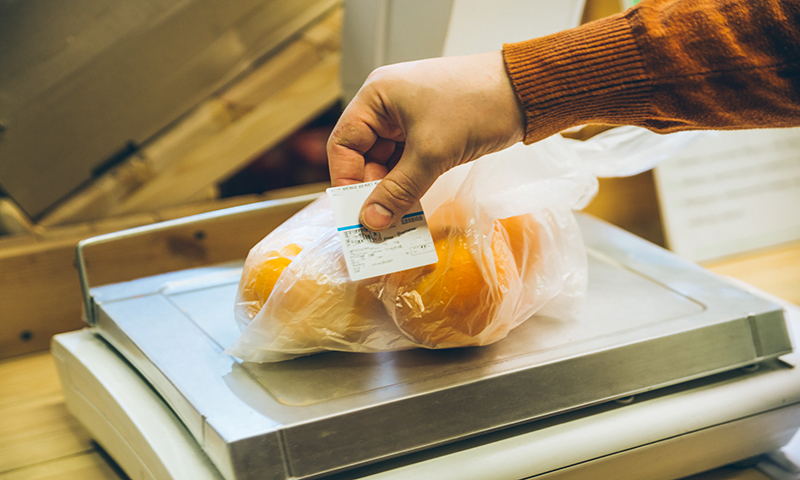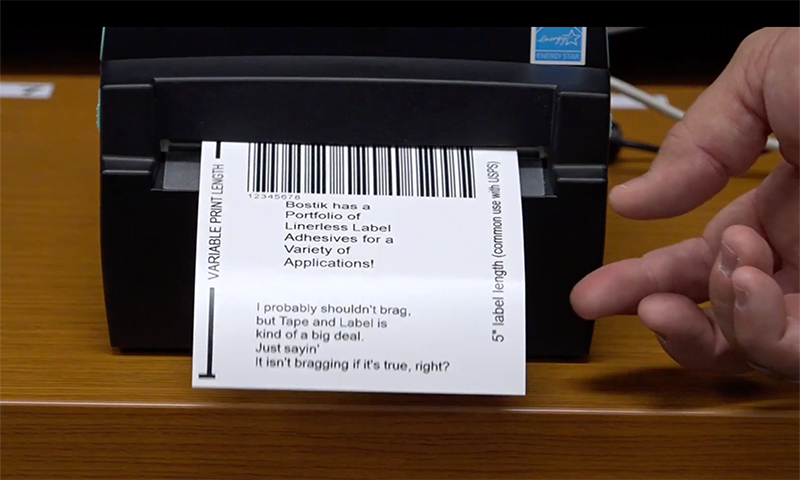- Home
- About Us
- Products
- Services
- News
- Contact

Linerless Labels then And Now

Since linerless labels were first created in the mid 1980s, several technology enhancements have improved their performance and manufacturing process. A few of these developments include reduced production costs, increased customization and enhanced end-use performance. Learn why these changes were made, how linerless labels have evolved and why you should take note.
REDUCED PRODUCTION COSTS
When linerless labels were first invented, they were viewed as being particularly expensive to manufacture for a few reasons. First, linerless options required a special printer with a cutter, which contributed to manufacturing expenses. This technology also often had to be custom-made until recent years and proved to be complicated to use, adding to installation and maintenance costs. Further, these options tended to be more expensive by the foot than other labels due to their silicone components. These expenses often made manufacturers overlook linerless labels as an option for their processes.
Today, manufacturers have a much different mindset toward linerless label manufacturing costs. While linerless options still require special printers and silicone components, many companies now offer simplified equipment to reduce printer maintenance. Additionally, many manufacturers have found that linerless labels enable cost savings overall, which justify investing in new equipment and the silicone components. These include:
1. More labels per roll: Without a release liner, up to 50% more labels can fit on one roll, enabling you to save on material costs.
2.Fewer roll changes: With more labels on one roll, downtime is decreased with fewer changeovers, resulting in lowered production costs overall.
3.Reduced weight and mass: Eliminating the liner reduces freight and storage costs. Most manufacturers report a savings of up to 40% in shipping costs after switching to linerless labels.
These benefits help offset the costs of switching to linerless labels and add value to the production process over time.
INCREASED CUSTOMIZATION
Early linerless label technologies offered limited options for customizable print lengths and shapes. For example, in the past, manufacturers who had 6’’ labels but only wanted to print on 4’’ had to use the extra material, creating waste.
Design opportunities were also limited in the past. Printing on both sides of a label was not an option. This was undesirable for labels applied to clear substrates, as the information could only be viewed from one side.
Today, advancements in printing technology now allow for variable print lengths and better design options in linerless labels. These advancements benefit manufacturers in several ways:
1. Reduced material waste: Linerless labels can now be created in the exact size needed, so you only print what you need. This makes it easy for companies to meet zero-waste sustainability initiatives.
2. Broadened design capabilities: Die-cutting has made it possible to customize the label’s shape for a distinct design. Plus, many printers can now print directly onto the adhesive later, enabling double-sided options.
These advancements enable increased customization opportunities in terms of size, shape and two-sided visuals, enabling manufacturers to create distinct labels ideal for various applications.

linerless labels
ENHANCED END-USE PERFORMANCE
Early versions of linerless labels included a “one size fits all” mentality toward the adhesive layer—meaning that only one type of adhesive was used for several applications. This caused several issues for manufacturers. If the adhesive was not compatible with substrates, the label would fall off. Or, if the adhesive was too aggressive, it would affect release coatings and result in print voids. Printer-adhesive compatibility further complicated the process, as the adhesive could build up on the rollers and cause downtime.
In the past, manufacturers also experienced issues in creating labels that withstood certain environmental conditions. This was especially an issue in restaurant and food application. The labels lacked resistance to moisture or heat, which meant the paper film or adhesive could degrade or dissolve.
In present day, many different adhesives can be used with linerless labels. This broadened range of options enables manufacturers to enhance the labels’ bonding performance in the following ways:
1. Improved substrate compatibility: Linerless label adhesive solutions now exist for previously difficult substrates, including recycled content and low energy surfaces. These solutions ensure the label won’t fall off or be too aggressive for the substrate.
2. Heightened printer compatibility: With more adhesives to choose from, manufacturers can find solutions that fit mobile, desktop, high-speed or other types of printers.
3. Increased environmental resistance: A variety of adhesive options are now available for applications with varying temperatures, moisture or UV rays. Silicone coatings also help improve environmental resistance on paper film components.
-
4th Floor,No.428 Wenzhou Avenue,Puzhou Street,Longwan,Wenzhou,China,
-
+86-577-66688057
+86-18058846873 -
Copyright © 2019 CHINA . Wenzhou Andy Printing Machine Factory and Suppliers.




